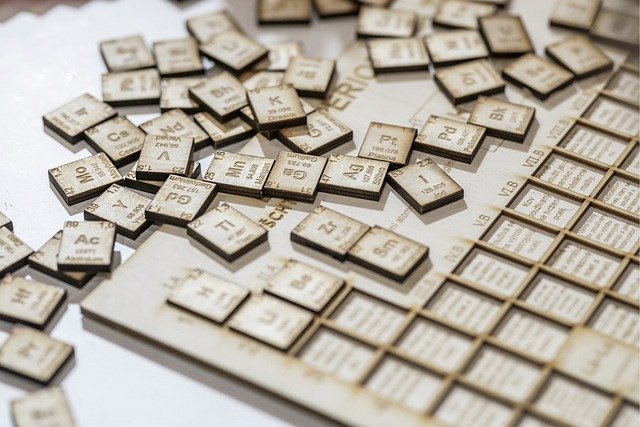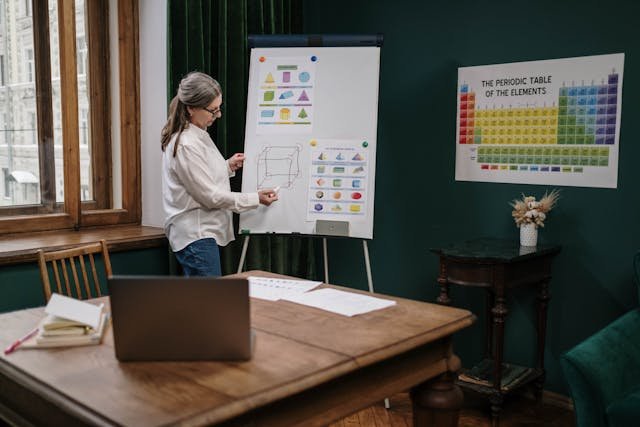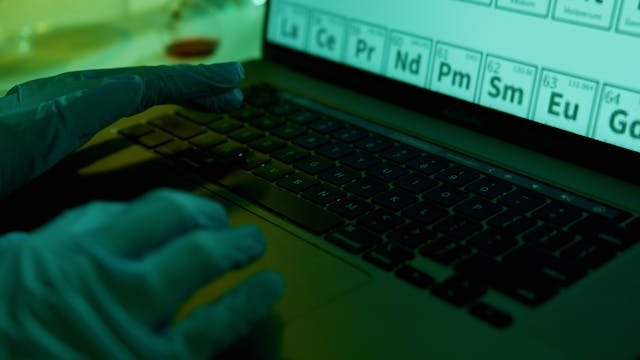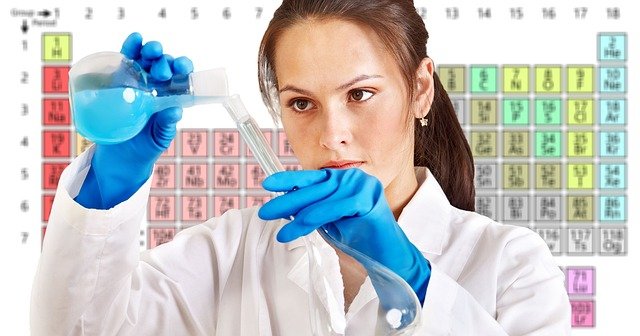Let’s be honest—when you first see the periodic table, it looks confusing. All those little boxes, strange symbols, and numbers can make you feel lost. But what if I told you it’s actually a very smart, simple way to understand everything around you?
Yes, really. Everything you touch, eat, drink, and breathe is made of elements. And those elements live in the periodic table. It’s like a big family photo of all the building blocks of matter.
In this guide, we’re going to break down the periodic table so clearly, even a 10-year-old could understand it. No big words. No confusing science talk. Just simple, fun learning.
Whether you’re a curious student, a parent helping with homework, or someone who just wants to finally understand what the periodic table is all about—this article is for you.
Ready? Let’s jump in.
What Is the Periodic Table, Really?
Think of the periodic table like a giant chart that helps us organize all the tiny things that make up everything in the world. These tiny things are called elements.
An element is a type of atom. And an atom is the smallest piece of anything. For example, water is made from two elements: hydrogen and oxygen. Table salt is made from sodium and chlorine. Gold jewelry? Just the element gold.
Now, the periodic table puts all these elements in order. Why? So we can learn about them easily. The table tells us:
- What the element is called.
- What its symbol is (like H for hydrogen, O for oxygen).
- Its number (called the atomic number).
- Its weight (called atomic mass, but don’t worry about that for now).
It’s like a cheat sheet for everything in the universe!
Why Is It Called “Periodic”?
Good question! The word “periodic” means something that happens in a pattern or repeats. In the periodic table, elements are arranged in a pattern. When you look at them from left to right, they change slowly and show regular patterns.
For example, some are metals, and others are not. Some are gases, some are solids. These patterns repeat in a special way as you go across and down the table. That’s why it’s called the periodic table.
Who Made the Periodic Table?
The periodic table didn’t just fall from the sky. It was made by a smart scientist from Russia named Dmitri Mendeleev in 1869. Over 150 years ago!
Here’s what makes it cool—Mendeleev figured out a way to arrange the elements so well that he even left empty spaces for elements that hadn’t been discovered yet. And guess what? Scientists found those elements later, and they fit perfectly where he predicted. Like magic. But really, it was science.
Mendeleev showed the world that elements weren’t just random. They followed rules and patterns. And once we saw the pattern, it became easier to study and understand them.
How Is the Periodic Table Organized?
Let’s look at the table itself. It’s made of rows and columns.
- Rows go left to right. These are called periods.
- Columns go top to bottom. These are called groups or families.
Elements in the same group (column) usually act the same way. That means if one element likes to mix with water, the others in its group might too. If one shines like metal, the others probably do too.
Let’s learn about chemical symbols. Each element sits in a little box with a few important things:
- Symbol: This is usually 1 or 2 letters. H for hydrogen, He for helium, Na for sodium.
- Name: The full name, like oxygen or carbon.
- Atomic number: This shows how many protons are in the atom. It also tells you where the element goes on the table.
- Atomic mass: This tells how heavy the atom is.
Simple, right?
A Closer Look at the First 10 Elements

These elements are found at the very top of the periodic table. They’re the lightest, the simplest, and also the most important in everyday life. Let’s go one by one.
1. Hydrogen (H) – Atomic Number 1
Hydrogen is the lightest and most common element in the whole universe. It has only one proton and one electron. That’s it. So simple!
Even though it’s tiny, hydrogen is super powerful. It’s found in stars, in water, in plants, and even inside your body. Water is made of two hydrogen atoms and one oxygen atom (H₂O).
Hydrogen is also used as a clean fuel. Some cars run on hydrogen instead of petrol. Cool, right?
2. Helium (He) – Atomic Number 2
Helium is a noble gas, which means it doesn’t like to mix with other elements. It just likes to be alone. That’s why it’s called “noble.”
Helium has two protons and is the second lightest element.
You’ve probably seen helium at birthday parties—it’s what makes balloons float! Why? Because helium is lighter than air. But it’s not just for fun—scientists use helium in machines and even in rockets.
3. Lithium (Li) – Atomic Number 3
Lithium is a metal, but it’s very light and soft. You can actually cut it with a knife!
It has three protons. You won’t find lithium floating in nature because it reacts easily with water and air. But it’s very useful.
The most exciting use? Batteries. Your phone, laptop, and electric cars use lithium batteries. It stores energy very well, which is why it’s so popular.
4. Beryllium (Be) – Atomic Number 4
Beryllium has four protons. It’s a hard, gray metal. It’s not found in large amounts, but it’s strong and light.
It’s used in aerospace—that means airplanes and space shuttles! Why? Because it can handle high heat and doesn’t bend easily.
5. Boron (B) – Atomic Number 5
Boron is interesting because it sits between metals and non-metals. It has five protons. That makes it sort of a “border” element.
You’ll find boron in glass, soap, and even sports gear like tennis rackets. It makes things stronger and more heat-resistant.
It’s also used in some vitamins, and scientists are studying how it can help keep bones healthy.
6. Carbon (C) – Atomic Number 6
Carbon has six protons, and it’s one of the most important elements in the universe. Why? Because everything that’s alive contains carbon. You, me, animals, trees—carbon is everywhere.
Carbon comes in many forms. It can be soft like charcoal, or hard like a diamond. That’s right—diamonds are made of pure carbon, just arranged in a very strong way!
Carbon is also found in fuel like coal and oil. And in carbon dioxide (CO₂), which plants need to grow. If there’s one element you should remember, it’s carbon.
7. Nitrogen (N) – Atomic Number 7
Nitrogen has seven protons, and here’s a fun fact: it makes up about 78% of the air we breathe! Even though we don’t use it to breathe like oxygen, it’s always around us.
Nitrogen is also found in the soil, and plants need it to grow. Farmers often use fertilizer with nitrogen to help their crops.
In our bodies, nitrogen is found in proteins—the things that build our muscles and keep us healthy.
8. Oxygen (O) – Atomic Number 8
Oxygen is a superstar. It has eight protons, and we need it to stay alive. Every time you take a breath, you’re breathing in oxygen.
Oxygen helps our cells turn food into energy. It also combines with hydrogen to make water (H₂O). And when things burn, oxygen is usually involved. That’s why fire needs air.
Oxygen is also found in rocks, plants, and animals. It’s everywhere.
9. Fluorine (F) – Atomic Number 9
Fluorine has nine protons. It’s a very reactive gas, which means it likes to combine with other elements quickly.
Fluorine is used in toothpaste to help protect your teeth. A tiny bit of it can make your enamel (the hard part of your tooth) stronger.
But be careful—fluorine by itself is very dangerous. It’s so reactive it can burn through skin. Luckily, in toothpaste, it’s mixed safely.
10. Neon (Ne) – Atomic Number 10
Neon has ten protons, and it’s a gas that doesn’t like to mix with anything—just like helium. It’s another noble gas.
Neon is famous for its bright colors. It’s used in neon signs—those glowing red and orange lights you see in shop windows and at parties.
It doesn’t react with other elements, so it’s very safe and stable. Neon might not be in your body, but it sure lights up the night.
The Families of the Periodic Table

Imagine the periodic table as a neighborhood. Each column is like a family living on one street. The people (or elements) in each family have similar habits. They may not look exactly the same, but they act alike in many ways.
Let’s get to know these families:
1. Alkali Metals (Group 1)
These are the first column on the left side of the table (not including hydrogen). They include elements like lithium, sodium, and potassium.
These metals are soft (you can cut them with a knife!) and very reactive. They react quickly with water, which can cause fizzing or even fire.
They’re never found alone in nature because they always mix with something else. For example, salt (the one you eat) is made of sodium (Na) and chlorine (Cl).
2. Alkaline Earth Metals (Group 2)
These are the second column from the left. They include magnesium, calcium, and beryllium.
They are also metals, a bit harder than the alkali ones. They’re also reactive, but not quite as much.
Calcium is the one you’ve probably heard of—it’s in milk and helps build strong bones and teeth.
3. Transition Metals (Groups 3–12)
These are the big middle section of the table. You’ve definitely seen many of these: iron, copper, gold, silver, and zinc.
These metals are:
- Hard
- Shiny
- Good at conducting electricity
You find them in wires, jewelry, coins, tools, and machines. Iron is in your blood, copper is in your home’s wires, and gold—well, you know where gold is.
4. Nonmetals (Mostly on the Right Side)
These are the elements that aren’t metals at all. Some are gases like oxygen and nitrogen, while others are solids like carbon and sulfur.
Nonmetals don’t conduct electricity or heat well. But they’re super important for life.
Oxygen helps you breathe. Nitrogen helps plants grow. Carbon is the reason life exists. Nonmetals might not shine, but they’re stars in their own way.
5. Halogens (Group 17)
These elements love to react with metals to form salts. Examples are fluorine, chlorine, and iodine.
You find them in things like toothpaste, disinfectants, and medicine. They’re powerful and helpful, but in large amounts, they can be dangerous.
6. Noble Gases (Group 18)
These are the elements in the last column on the right: helium, neon, argon, and others.
They are called “noble” because they don’t like to mix with others. They are stable and safe, which makes them useful in balloons, lights, and even lasers.
By learning these groups, you can understand how new elements might behave—even if you’ve never heard of them before. That’s why the periodic table is so powerful: it helps us predict and understand.
How to Read an Element Box on the Periodic Table

Each little box on the periodic table gives you a lot of helpful information about an element. Let’s break down what you’ll see in most element boxes.
Imagine a simple box for the element Oxygen. It might look like this:
8
O
Oxygen
15.999
Let’s go through what each part means.
1. Atomic Number (Top Number)
This is the number of protons in the atom. For oxygen, it’s 8. That means every oxygen atom has 8 protons in its nucleus (the center of the atom).
The atomic number also tells you the order of the elements on the table. They go from 1 (hydrogen) all the way up to over 100!
2. Element Symbol (Big Letter or Letters)
This is a short name for the element. Usually, it’s just one or two letters.
- H for hydrogen
- He for helium
- Na for sodium (this one comes from Latin—Natrium)
Always remember, the first letter is uppercase, and if there’s a second one, it’s lowercase.
3. Element Name
Pretty simple—this is the full name of the element: Oxygen, Carbon, Iron, etc. Some names come from Latin or Greek, which is why they may not always match the symbol.
4. Atomic Mass (Bottom Number)
This is how heavy the atom is. It’s the average mass of all the atom’s versions (called isotopes—but you don’t need to worry about that now).
You don’t have to memorize this number, but it’s useful when scientists need to measure how much of an element they have.
Let’s do a few more examples to practice:
Example 1: Carbon
6
C
Carbon
12.011
- It has 6 protons.
- Its symbol is C.
- It’s very light.
- It’s found in all living things.
Example 2: Neon
10
Ne
Neon
20.180
- 10 protons
- Symbol is Ne
- It’s a gas that glows bright in signs.
Learning to read these boxes is like learning a code. Once you know the pieces, you can look at any element and understand what it’s like and how it behaves.
Why the Periodic Table Is More Than Just a Chart
The periodic table isn’t just a poster on a science classroom wall—it’s a powerful tool. It helps scientists figure out:
- What elements to mix to make new materials
- How elements will react with each other
- Which elements are safe and which are dangerous
- Where to find elements in nature or in the lab
And it doesn’t stop there. Chemists use it to make medicines, engineers use it to build better batteries, and biologists use it to understand what our bodies are made of.
So even though it looks simple, the periodic table is one of the smartest inventions in science.
The Periodic Table in Everyday Life – A Closer Look

You don’t need a lab coat to “use” the periodic table. It’s already a part of your daily life, from the moment you wake up to the time you go to bed. Let’s take a walk through a typical day—and point out how many elements you actually come across.
Morning Routine: Waking Up With Elements
You open your eyes and grab your toothbrush. That brush is made of plastic, which comes from carbon (C), hydrogen (H), and sometimes fluorine (F).
Then comes toothpaste—it contains fluoride (from fluorine), which helps prevent cavities. Some toothpaste also has calcium (Ca) or phosphorus (P) to strengthen teeth.
Next, you turn on the tap. Water is made of hydrogen (H) and oxygen (O). Without these two elements, there’s no water—and without water, there’s no life.
You may use a metal faucet, likely made of chrome (Cr), nickel (Ni), or zinc (Zn). These elements resist rust and last a long time.
Breakfast: Elements on Your Plate
When you cook an egg or pour milk into cereal, you’re eating and drinking compounds built from elements:
- Protein in eggs contains carbon (C), hydrogen (H), oxygen (O), nitrogen (N), and sulfur (S)
- Milk is rich in calcium (Ca), which helps build strong bones and teeth
- Bananas contain potassium (K)—great for your muscles and heart
- Table salt is made from sodium (Na) and chlorine (Cl)
Even your non-stick pan may use aluminum (Al) or coatings made from fluorine-based compounds.
School or Work: Elements in Technology
You grab your laptop or tablet. It runs thanks to many elements:
- Silicon (Si) makes up the chips inside. That’s why it’s called “Silicon Valley”!
- Lithium (Li) powers your battery
- Gold (Au) and silver (Ag) connect wires inside—because they’re great conductors
- Copper (Cu) carries electricity
Your phone? Same story. Without these elements, no TikTok, no Zoom, no music, no games.
Hygiene and Health: Safe and Clean with Elements
Your hand sanitizer might contain alcohol made from carbon (C), hydrogen (H), and oxygen (O). Disinfecting wipes may have chlorine (Cl).
If you get a cut and use iodine (I) or hydrogen peroxide, you’re using elements to kill germs and keep you safe.
If you’re taking vitamins, guess what? They often contain iron (Fe) for blood, magnesium (Mg) for nerves, or zinc (Zn) for immune support.
Outside in Nature: Elements at Work
You step outside. The air you breathe is mostly:
- Nitrogen (N) – about 78%
- Oxygen (O) – about 21%
The rest is tiny bits of argon (Ar), carbon dioxide (CO₂), and other gases.
When it rains, you’re feeling water—H₂O. If there’s lightning, it creates ozone, a special form of oxygen (O₃).
Plants? They breathe in carbon dioxide and give back oxygen. They also pull nutrients from the soil, like:
- Phosphorus (P) for roots
- Potassium (K) for fruit
- Nitrogen (N) for green leaves
Inside Your Home: Elements Everywhere
Look around your house:
- Lightbulbs may contain argon (Ar) or tungsten (W)
- Pipes carry water using copper (Cu) or PVC made with carbon (C) and chlorine (Cl)
- Windows are made from glass—mostly silicon (Si)
- Paints may contain titanium (Ti) for bright white color
Even your TV screen may use rare elements like europium (Eu) and terbium (Tb) to create bright colors.
At Night: Elements in Your Body at Work
Even while you’re sleeping, your body is using elements:
- Oxygen (O) helps your cells work and heal
- Iron (Fe) carries oxygen in your blood
- Magnesium (Mg) calms your muscles
- Calcium (Ca) helps your heart beat
Your brain, your heart, your bones—they’re all powered by chemistry.
As you can see, the periodic table isn’t something stuck in a science textbook. It’s a living, breathing guide to everything you see and touch. It helps us understand the world—and even ourselves.
How Debsie Helps Kids Learn the Periodic Table (and Love It!)

At Debsie, we know the periodic table can feel scary at first. All those boxes, numbers, and strange letters? It’s enough to make anyone’s head spin. But here’s the thing: it doesn’t have to be hard.
We teach science—and especially tricky topics like the periodic table—in a way that’s so simple, even a 7-year-old can understand it, and so deep that an 18-year-old can master it.
Here’s how we do it:
Gamified Learning That Makes Science Fun
Learning shouldn’t be boring. That’s why Debsie turns every topic into a game-like adventure. Kids get points, badges, and rewards as they explore the periodic table like a treasure map—element by element.
They get to solve challenges, do fun quizzes, and even create experiments at home (with adult supervision, of course!).
Live Classes with Real Expert Teachers
Our teachers aren’t just experts—they’re kind, fun, and super passionate about science. In live online classes, kids can ask questions, talk to teachers, and get help in real time.
We explain tricky things (like atomic numbers and noble gases) using real-life examples, stories, and hands-on activities. That’s how kids go from “I don’t get it” to “I love it!”
Deep Learning That Builds Smart Thinking
At Debsie, we don’t just help kids memorize the periodic table—we help them understand it. Kids learn to see patterns, make connections, and think like real scientists.
They learn life skills too, like:
- Problem-solving
- Patience
- Curiosity
- Critical thinking
These are skills that go far beyond the classroom.
Learning for Kids Ages 5–18, From Anywhere
No matter how old your child is—or where they live—they can learn with Debsie. We have students from over 9 countries, learning everything from basic science to advanced chemistry.
And since everything is online, your child can learn right from home, at their own pace, with lessons tailored to their age and level.
🎁 Try a Class for Free
Not sure if your child will enjoy it? You can book a free trial class to see the magic for yourself.
👉 Click here to try a free science class at Debsie
No pressure. Just fun, friendly learning that could change your child’s life.
Final Thoughts: The Periodic Table Isn’t Just Science—It’s Life
The periodic table might look like just a chart full of boxes and numbers, but now you know—it’s so much more. It’s a map of everything in the universe. Every breath you take, every bite of food, every toy, every phone, every living thing… it all starts with the elements on that table.
And once you learn how to read it, you don’t just understand chemistry. You begin to understand how the world works.
At Debsie, we believe every child can learn science in a way that’s exciting, clear, and fun. We make sure your child doesn’t just memorize facts—they understand deeply, they grow smarter, and they become more curious and confident every day.
Ready to see your child fall in love with science?
👉 Book a free science class now at Debsie
👉 Explore our full courses for kids aged 5 to 18
Read Next:
